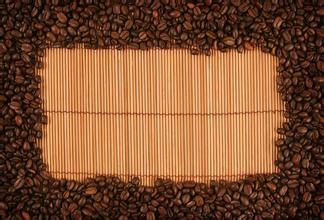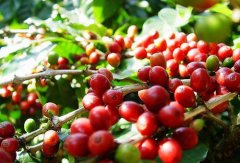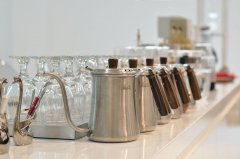Introduction of mocha coffee beans
Mocha coffee (also known as mocha or mocha, also translated as Arabian premium coffee, English cafe Mocha, meaning chocolate coffee) is a variant of Italian latte (Cafe Latt é). Like the classic Italian latte, it is usually made of 1/3 espresso.
Mocha Coffee
Mocha Coffee
(Caff è Espresso) with 2/3 milk foam, but it also adds a small amount of chocolate. Chocolate is usually added in the form of chocolate syrup, but some coffee selling systems are replaced by instant chocolate powder. Sometimes, whipped cream, cocoa powder, and cotton candy are added to add to the aroma of coffee and as a decoration. Unlike the Italian Cappuccino, there is no milk foam on the mocha. Instead, mocha coffee is usually topped with cream and cinnamon or cocoa powder. It is also possible to add sunflower honey powder to the surface as a decoration and add flavor. One variant of mocha is White Cafe Mocha, which uses white chocolate instead of milk and dark chocolate. In addition to white mocha, there are some variants that are mixed with two kinds of chocolate syrup, sometimes called "Zebras" and sometimes comically called "tuxedo mocha" (Tuxedo Mocha).
Photos of mocha coffee products
Photos of mocha coffee products (20)
In some parts of Europe and the Middle East, Moccaccino is used to describe Italian lattes with cocoa or chocolate. In the United States, mocaccio refers to an Italian cappuccino with chocolate.
The name Mocha Coffee comes from Mocha, a small town on the Red Sea in Yemen. This place monopolized the export of coffee in the 15th century, which had a particular impact on the coffee trade sold to the Arabian Peninsula. Mocha is also a "chocolate-colored" coffee bean (from Yemeni mocha), which makes people associate coffee with chocolate and develop chocolate espresso drinks. In Europe, "mocha coffee" may refer either to this drink or simply to coffee made from mocha beans. In Yemen, coffee growers plant poplars to provide shade for coffee to grow. As in the past, these trees are planted on steep terraces to maximize the use of less rainfall and limited soil resources. In addition to the Tippika Coffee Tree and the Bourbon Coffee Tree, more than a dozen different coffee species native to Ethiopia are grown in Yemen. However, even the best coffee, such as premium mocha, is air-dried and the peel is connected to the beans. Until now, Yemen often uses traditional stone mills to remove dry and hard shells, which makes the shape of coffee beans very irregular and often damages them.
Despite the high quality and smooth aroma of Yemeni coffee, there is something unsatisfactory, that is, the quality can not be continuously guaranteed, and the classification of its coffee beans is uncertain. Traditionally, the best coffee beans in Yemen come from Mattari, followed by Sharki, followed by Sanani. These beans are low in caffeine and are eaten from December to April of the following year. The problem in the past has been that coffee from the north was mixed with shoddy stuff before it was shipped from the southern port of Aden. Only coffee shipped from the port of Hodeida can be determined to be genuine from the north. The vast majority of Yemeni coffee is grown in natural conditions, mainly due to the lack of funds for growers.

Important Notice :
前街咖啡 FrontStreet Coffee has moved to new addredd:
FrontStreet Coffee Address: 315,Donghua East Road,GuangZhou
Tel:020 38364473
- Prev

Tricheli and Maral Indian coffee in Kerala
Slippery and delicious coffee with uniform granules. There are several reasons why Indian coffee is so popular with coffee hobbies, but the most important is a process used in coffee beans, often called the monsooning process. In the past, passengers or goods sailed to and from India, which took about several months to reach Europe. In transit due to
- Next

Australian Fine Coffee Coffee cultivation
Boutique coffee (specialty coffee) is also called specialty coffee selection coffee. It refers to coffee made from a small number of raw beans with excellent taste grown in an ideal geographical environment. Depending on the special soil and climatic conditions in which they grow, they have outstanding flavor. After strict selection and classification, this kind of coffee is hard in texture, rich in taste and stylish.
Related
- Does Rose Summer choose Blue, Green or Red? Detailed explanation of Rose Summer Coffee plots and Classification in Panamanian Jade Manor
- What is the difference between the origin, producing area, processing plant, cooperative and manor of coffee beans?
- How fine does the espresso powder fit? how to grind the espresso?
- Sca coffee roasting degree color card coffee roasting degree 8 roasting color values what do you mean?
- The practice of lattes: how to make lattes at home
- Introduction to Indonesian Fine Coffee beans-- Java Coffee producing area of Indonesian Arabica Coffee
- How much will the flavor of light and medium roasted rose summer be expressed? What baking level is rose summer suitable for?
- Introduction to the characteristics of washing, sun-drying or wet-planing coffee commonly used in Mantenin, Indonesia
- Price characteristics of Arabica Coffee Bean Starbucks introduction to Manning Coffee Bean Taste producing area Variety Manor
- What is the authentic Yega flavor? What are the flavor characteristics of the really excellent Yejasuffi coffee beans?

